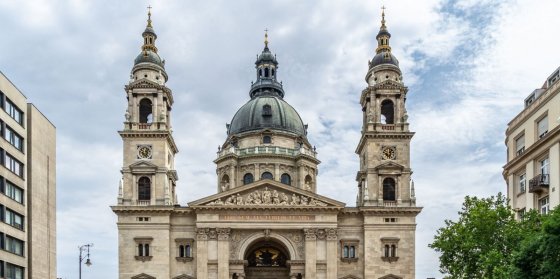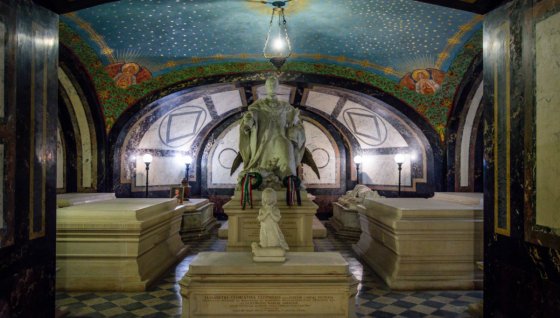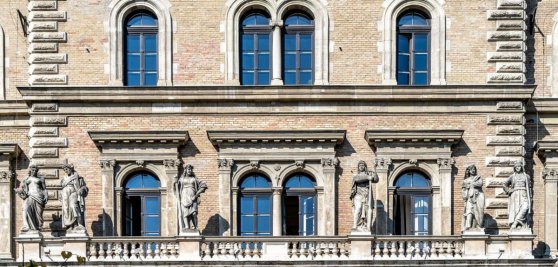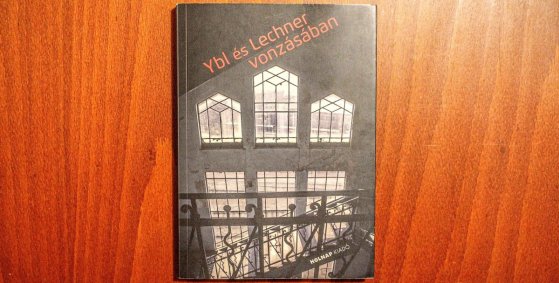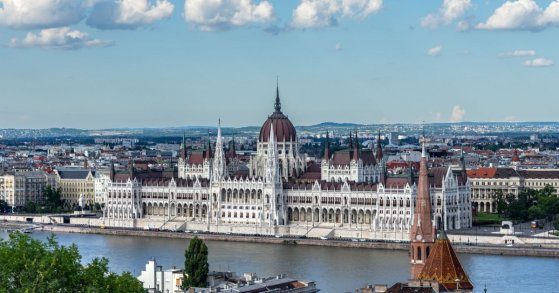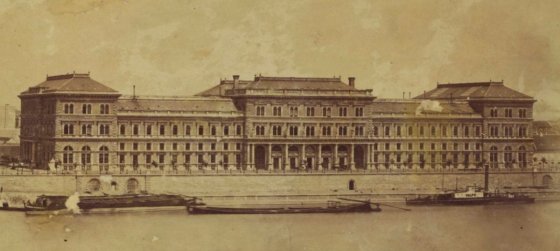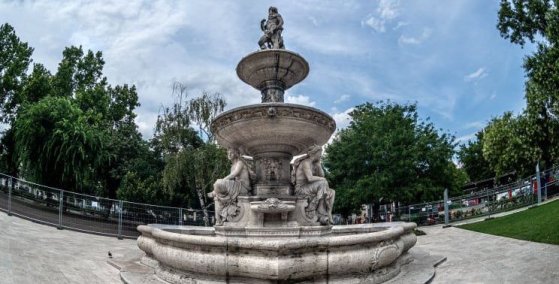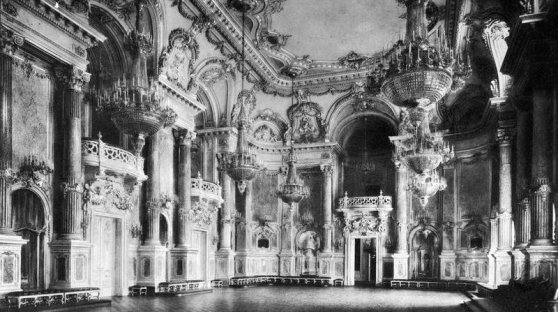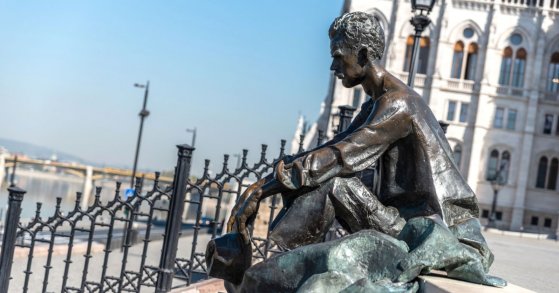 The „intertwined history” of the bridges and the city of Budapest
Which ideas and events have shaped the fate of bridges of Budapest and the cityscape? Alongside many other interesting facts, this question is also answered this newly published book by the Budapest City Archives, which introduces the history of bridges in Budapest.
The „intertwined history” of the bridges and the city of Budapest
Which ideas and events have shaped the fate of bridges of Budapest and the cityscape? Alongside many other interesting facts, this question is also answered this newly published book by the Budapest City Archives, which introduces the history of bridges in Budapest.
Miklós Ybl
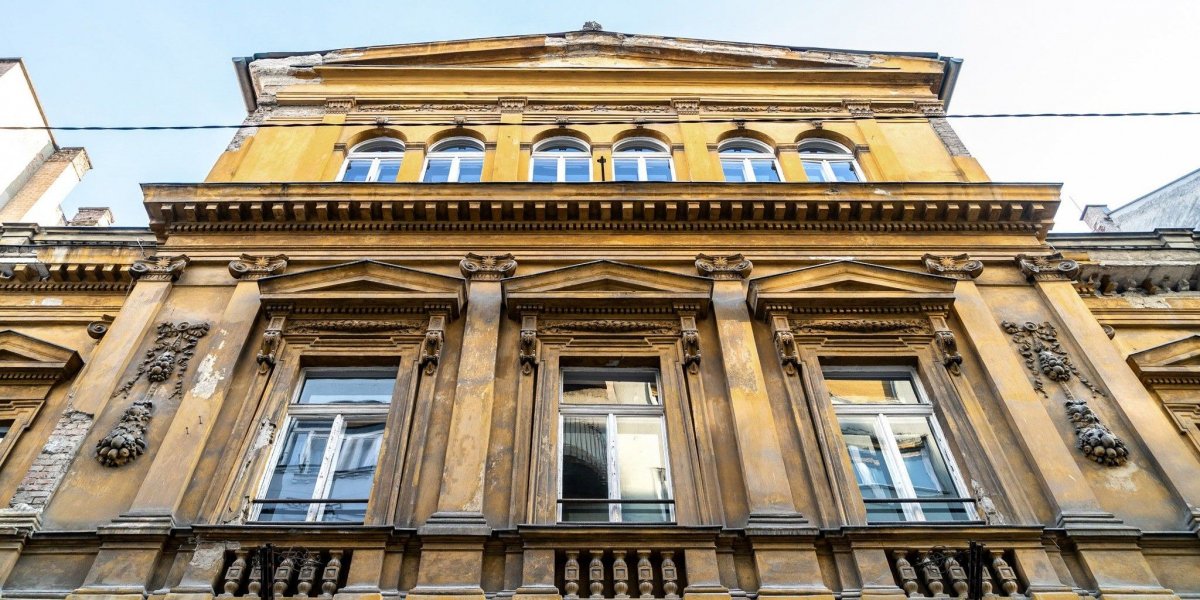 Sports in 19th century – National Gymnasium turns 150
Sports in 19th century – National Gymnasium turns 150
December 4, 2020 at 3:00 PM
One hundred and fifty years ago, a gymnasium was built in Budapest, a building that still stands on Szentkirályi Street. However, it is not quite like modern sports halls. From the outside, it looks just another palace. Only a small plaque reminds passers-by that it was once built as the National gymnasium in 1870 following the Austro-Hungarian compromise, during Gyula Andrássy's term as Prime Minister. This is what a gymnasium was like at the time: it looked like a palace and housed not only three halls and dressing rooms, but space for the community to live its life. While the rooms are now used for university education, the sports halls still serve their original function.
Fifty years of construction – Saint Stephen's Basilica opened 115 years ago
December 1, 2020 at 3:00 PM
St. Stephen's Basilica is the largest church in Budapest. Today, it is one of Budapest's most famous monuments of the capital, thanks to the work of Miklós Ybl. However, it also features prominently in the oeuvre of two other architects: József Hild started its design, while József Kauser finished its construction. Construction lasted an astounding 55 years, and the church was finally consecrated 115 years ago, on 19 November 1905.
The most Hungarian Habsburg rests in Buda Castle – A visit to the Palatine Crypt
November 14, 2020 at 9:00 AM
A lesser-known segment of the vast Royal Palace of Buda Castle has housed the final resting place of the Palatine-branch of the House of Habsburg since the Hungarian National Awakening and the Reform Period. The crypt of the Habsburg palatines has remained almost unchanged since the 19h century. Few know that a Habsburg was buried in the crypt in the 2010s. Pestbuda visited the stunning site as part of a tour organised by the National Hauszmann Program before the restrictions announced on 10 November, limiting events entered into force. Join us on a visit to the crypt of the Royal Palace of Buda Castle.
Stunning decorations line the Renaissance-revival palace of the Main Customs House
October 19, 2020 at 9:00 AM
The Main Customs House building, which today houses Corvinus University is a major sight in Budapest. The façade is decorated by 22 statues of figures from Greek-Roman mythology and traditional Hungarian crafts. The main courtyards, staircases, the internal and external decorations all highlight just how great a masterpiece the building is. Construction of the building began 150 years ago in 1870, according to plans drawn up by one of the greatest Hungarian architects, Miklós Ybl.
Defined by Ybl and Lechner
October 15, 2020 at 6:00 PM
When asked to name Hungarian architects, most people will likely mention Miklós Ybl and Ödön Lechner. This is no coincidence; the two architects were prolific and important artists is their age. But how much do people know about their time and their contemporaries? The new volume Ylb és Lechner vonzásában provides information on these.
Parliament or Palace? – Construction of the Hungarian parliament began 135 years ago
October 12, 2020 at 5:58 PM
On 12 October 1885 150 workers began to dig a 40,000-cubic-metre pit. With this construction of the Hungarian parliament building began based on plans drawn by Imre Steindl. Lasting nearly two-decades the project transformed a neglected, to-be-developed part of the city, Tömő tér, into one of the most symbolic places in the country.
Replanned twice by the great Ybl – Construction of the Main Customs House began 150 years ago
September 30, 2020 at 10:00 AM
The stunning Renaissance revival palace of the Main Customs House by Miklós Ybl is better known today as Corvinus University. The building has defined the view of the Danube embankment since its completion. A lesser-known fact about the building is that it was initially planned for Kossuth Square. Foundation work began but later stopped when Gyula Andrássy (the prime minister in office at the time) supported the Budapest City Council in the dispute about the site. The building was moved to Ferencváros, and Ybl was forced to redraw his plans for the palace twice before construction began 150 years ago.
Danube, Tisza, Drava, Sava – Beautiful fountain in Budapest city centre to be renovated
September 16, 2020 at 3:00 PM
A beautiful fountain can be found in the centre of Budapest. Designed by Miklós Ybl, it depicts what were once the four largest rivers of Hungary: the Danube, the Tisza, the Drava and the Sava. Originally erected on Kalvin Square in 1883 it was severely damaged in the Second World War. A copy of the fountain and its statues were later erected on Erzsébet Square. Sadly, these were damaged, not by armed conflict but simply passers-by, leading to the foot of the Sava figure being broken off – a fault that will also be repaired with the complete renovation of the fountain.
The builder of Buda Castle - How did Alajos Hauszmann win the commission?
June 20, 2020 at 9:00 AM
We will never know exactly how many architects imagined that they could be the designer of the Buda Castle. Those who, after the death of Miklós Ybl, felt a vocation to continue the work already begun also tried to find connections and get recommendations from the members of the Public Works Council, the construction committee, and higher circles. Eventually, Alajos Hauszmann was given the job, who was silently waiting for the decision, not even telling his family that he was the candidate.
Poetry Day Walk - Statues of the greatest Hungarian poets in Budapest
April 11, 2020 at 10:00 PM
On this year's National Poetry Day, 11 April - the birthday of Attila József - the public, community poem readings, which have already become a tradition, were cancelled, and we could not even visit the statues of the greatest Hungarian poets to show our respect and gratitude. Thus, Pestbuda offers only a virtual walk between the works depicting our national greats in Budapest.
More articles
 The „intertwined history” of the bridges and the city of Budapest
Which ideas and events have shaped the fate of bridges of Budapest and the cityscape? Alongside many other interesting facts, this question is also answered this newly published book by the Budapest City Archives, which introduces the history of bridges in Budapest.
The „intertwined history” of the bridges and the city of Budapest
Which ideas and events have shaped the fate of bridges of Budapest and the cityscape? Alongside many other interesting facts, this question is also answered this newly published book by the Budapest City Archives, which introduces the history of bridges in Budapest.
 The Bridge Report, which brought a turning point in the history of Budapest
A travel report that changed the history of Pest and Buda, as well as Hungary. The little book contributed to the change of half a thousand years of legal customs and the implementation of an investment of unprecedented size and technical quality. This book was The Bridge Report [Hídjelentés in Hungarian].
The Bridge Report, which brought a turning point in the history of Budapest
A travel report that changed the history of Pest and Buda, as well as Hungary. The little book contributed to the change of half a thousand years of legal customs and the implementation of an investment of unprecedented size and technical quality. This book was The Bridge Report [Hídjelentés in Hungarian].
 Drama on the university wall - The heroic monument was planned 95 years ago
In the constant hustle and bustle of the Egyetem Square in Pest, the students may not even notice the monument that decorates the short section of wall between the church and the central building of ELTE. However, it commemorates their predecessors, the heroes who fought for their country in World War I, and those who heroically helped them. The first design of the dramatically collapsing soldier was born in 1928, ninety-five years ago.
Drama on the university wall - The heroic monument was planned 95 years ago
In the constant hustle and bustle of the Egyetem Square in Pest, the students may not even notice the monument that decorates the short section of wall between the church and the central building of ELTE. However, it commemorates their predecessors, the heroes who fought for their country in World War I, and those who heroically helped them. The first design of the dramatically collapsing soldier was born in 1928, ninety-five years ago.

